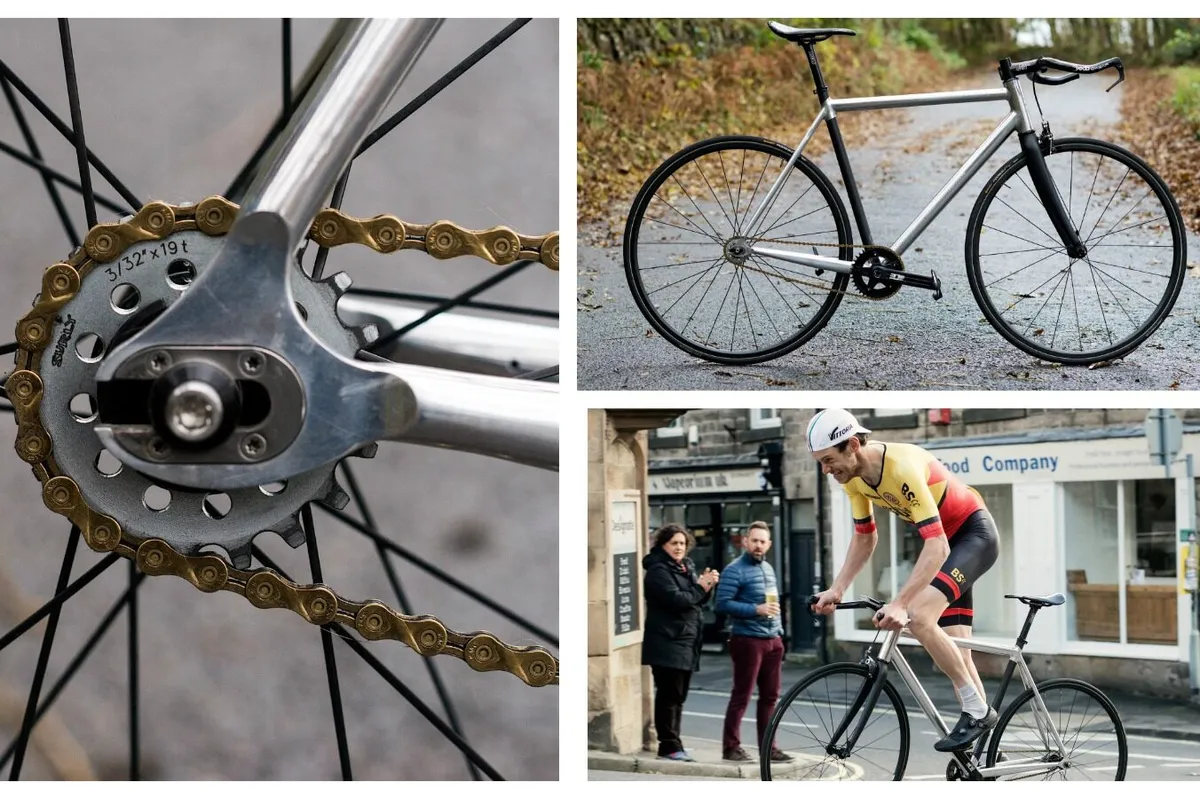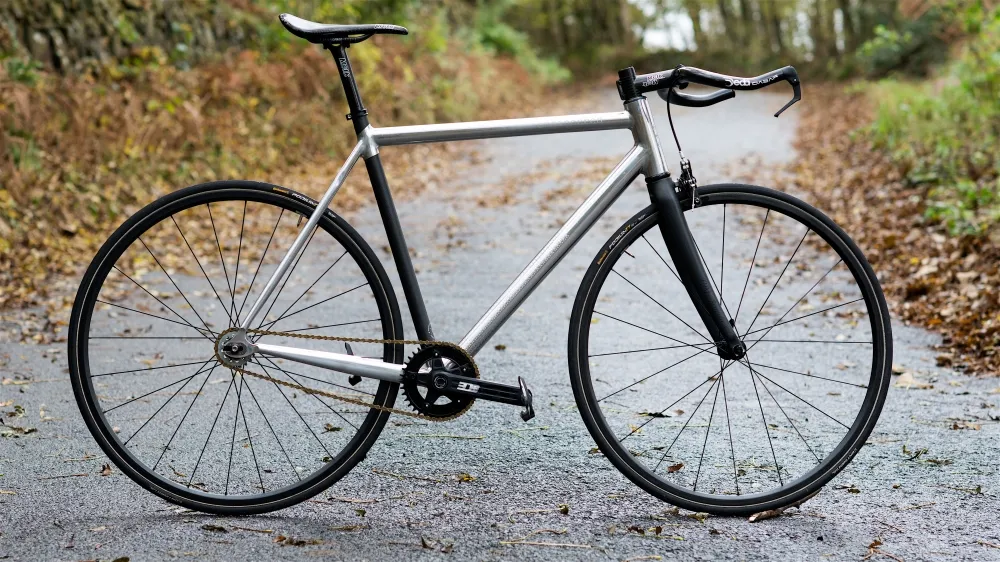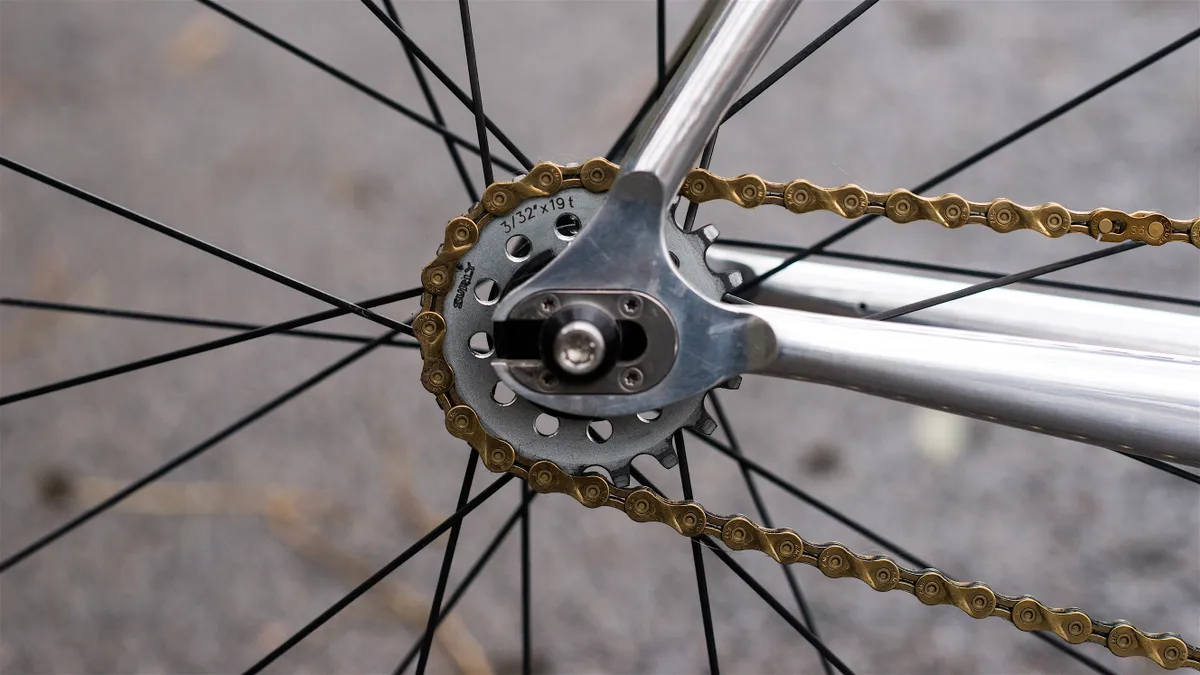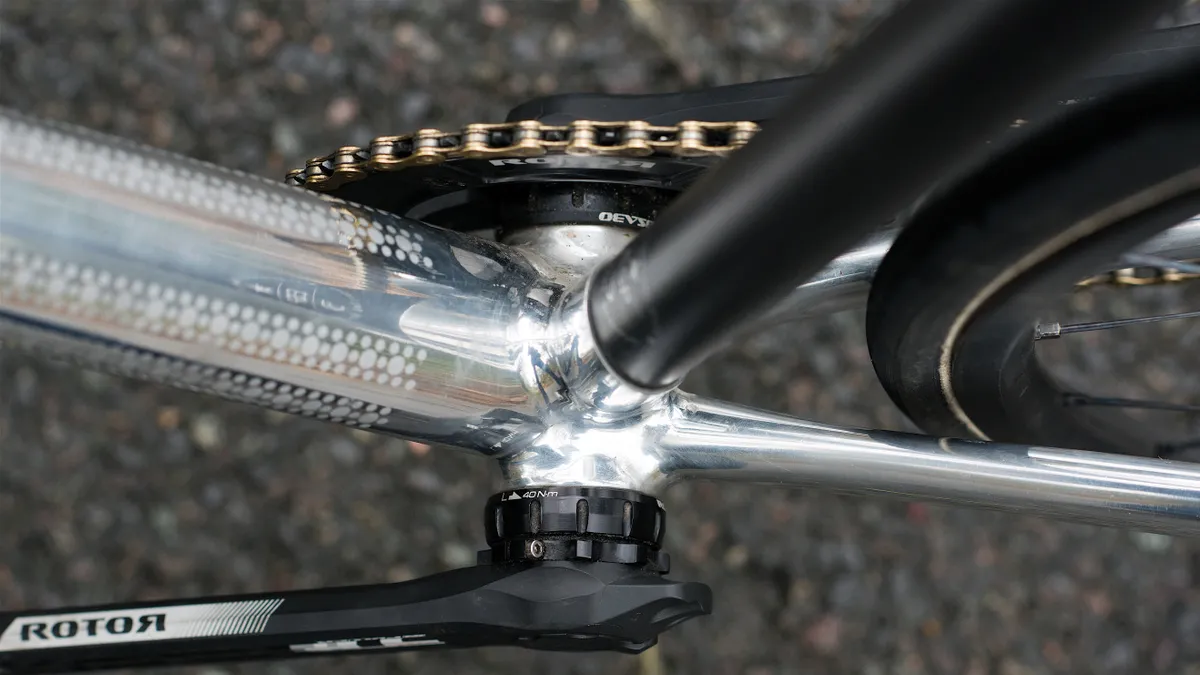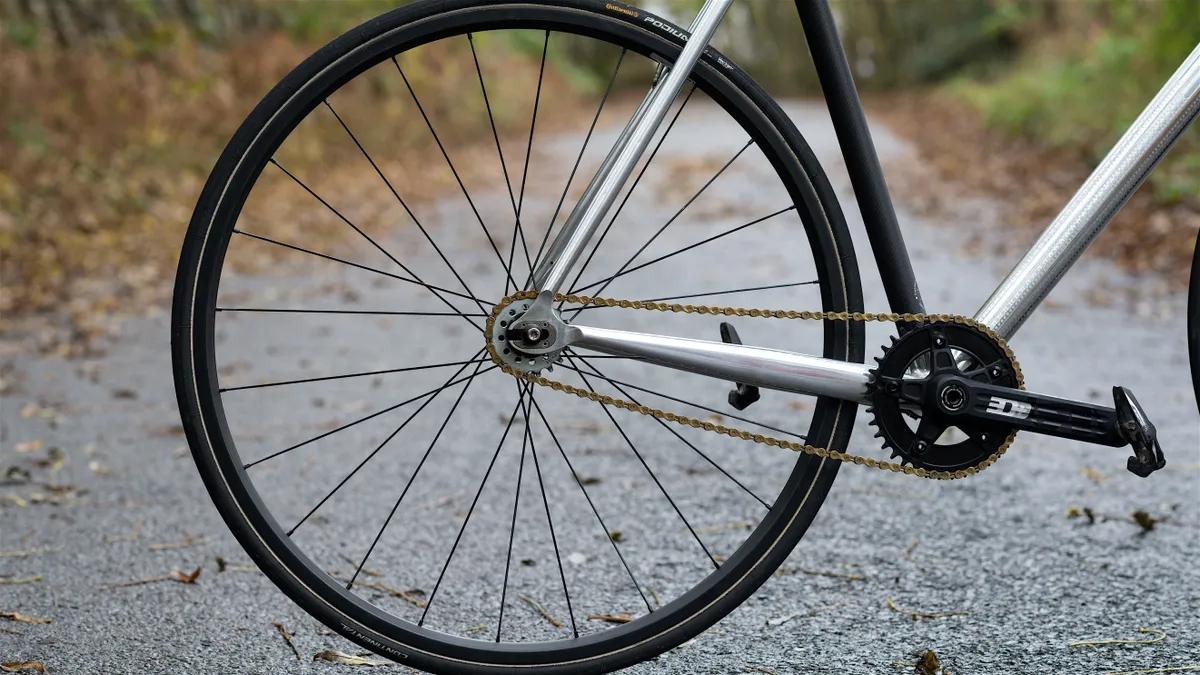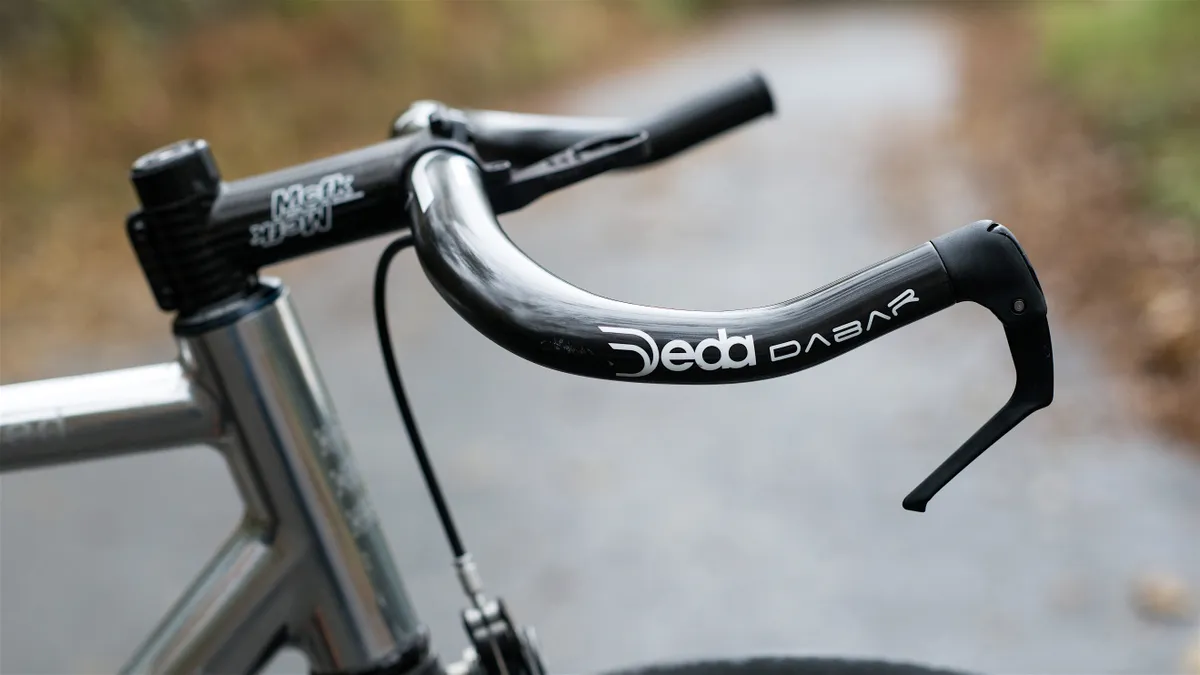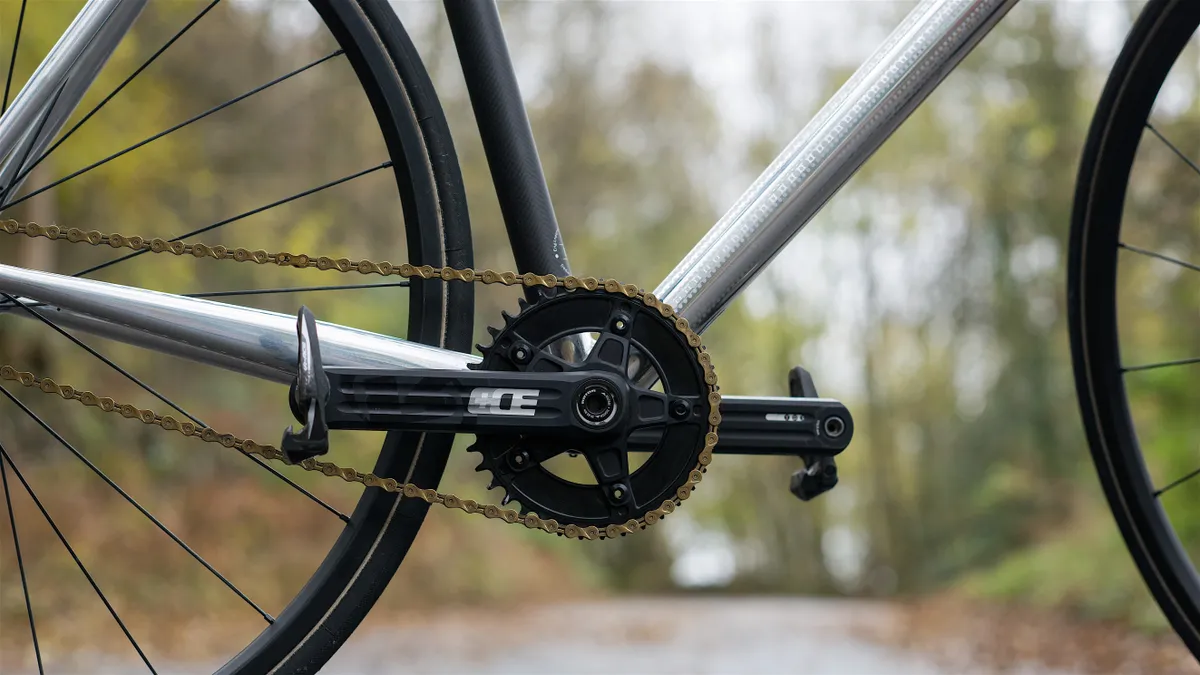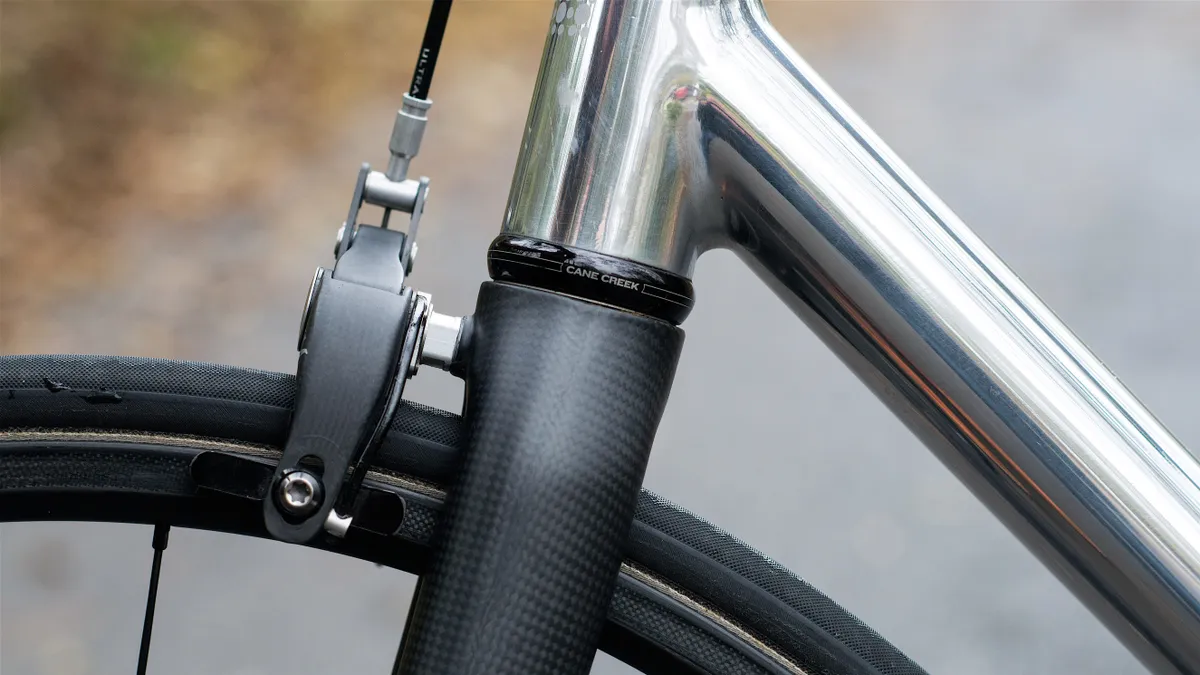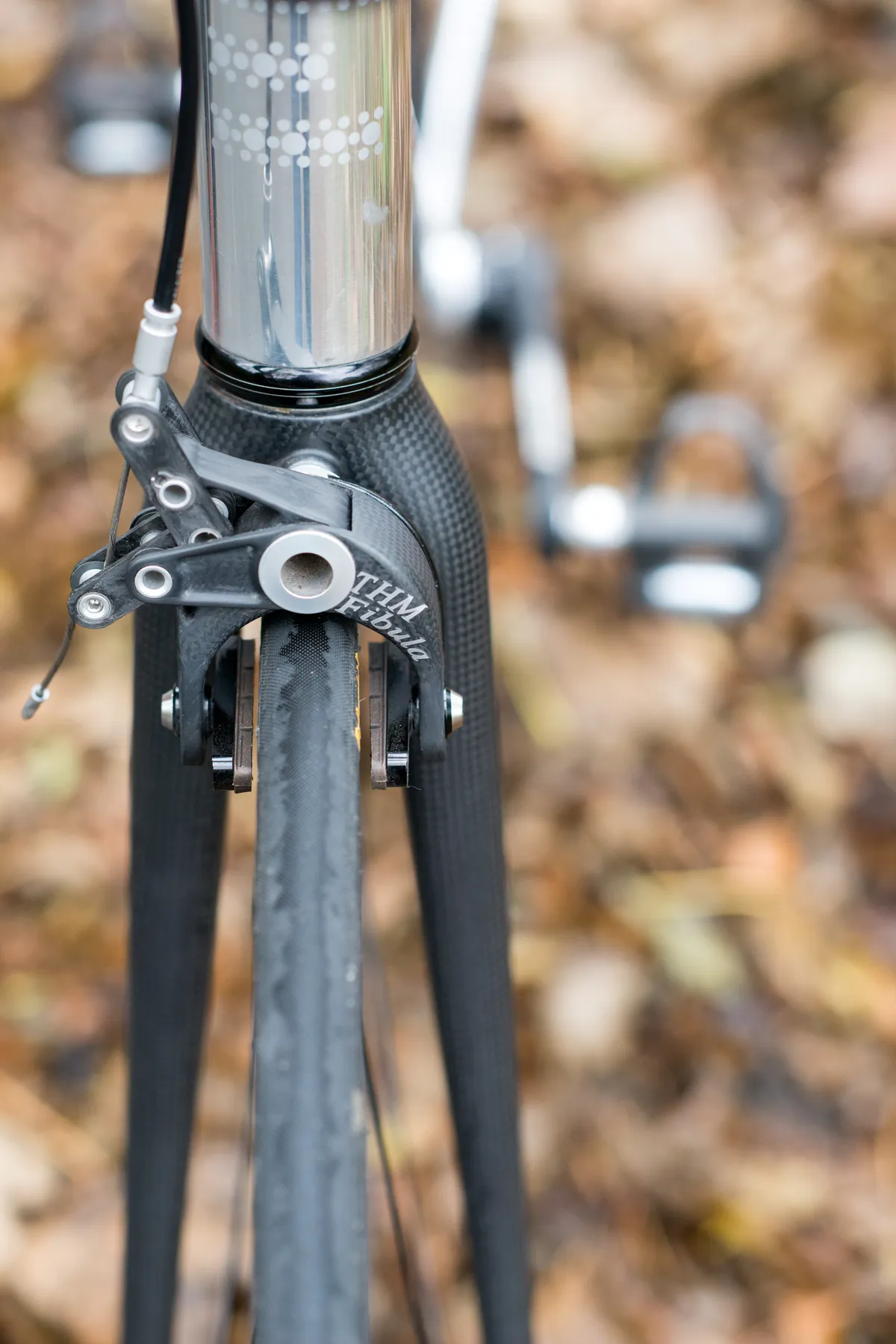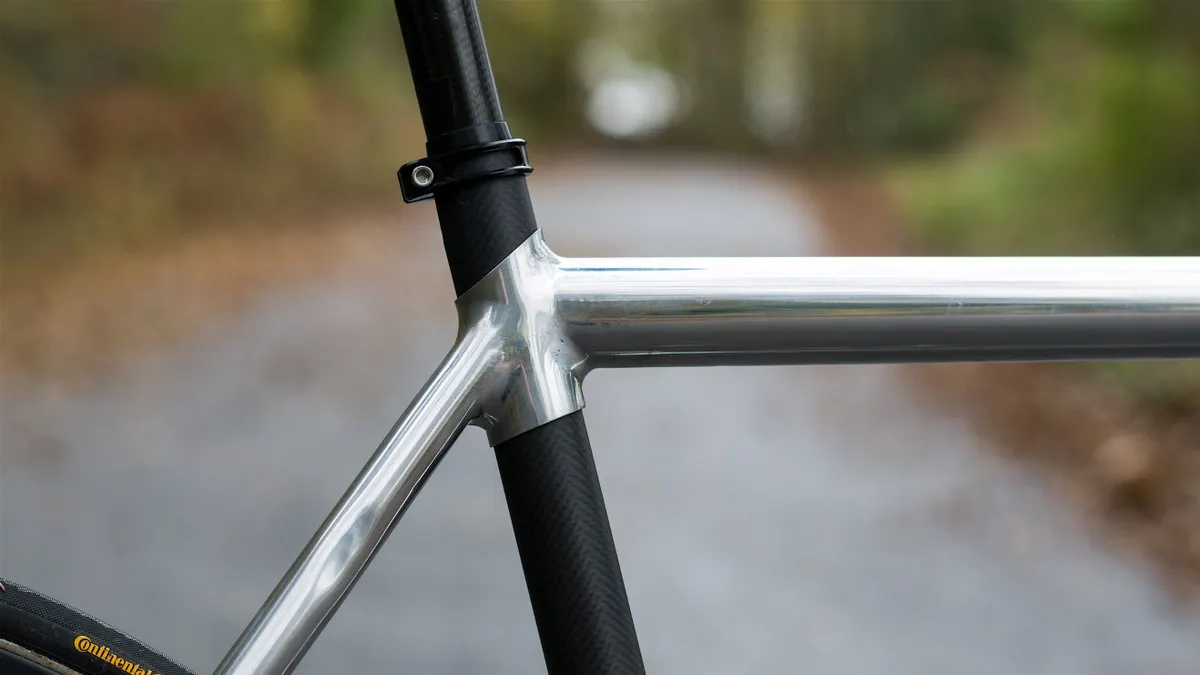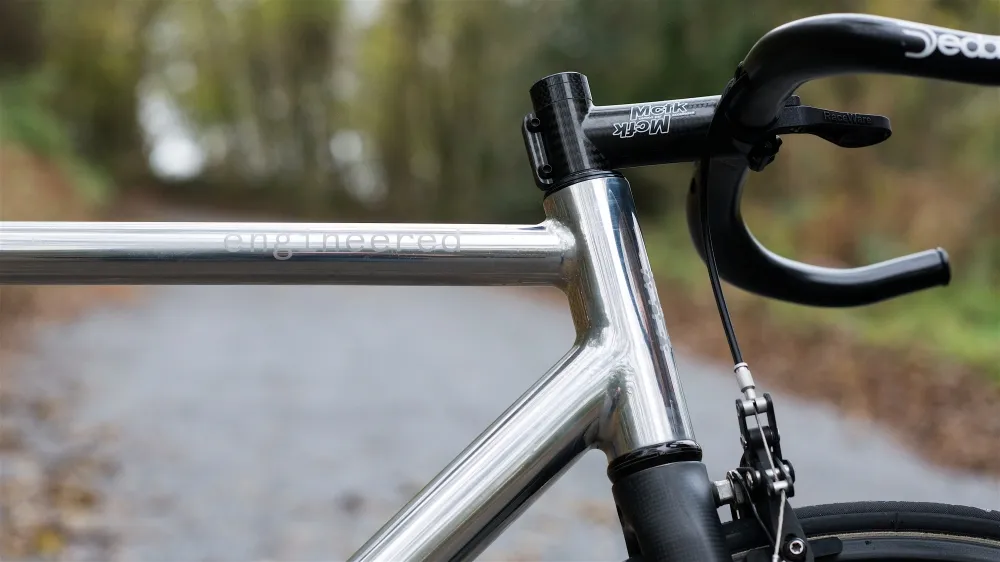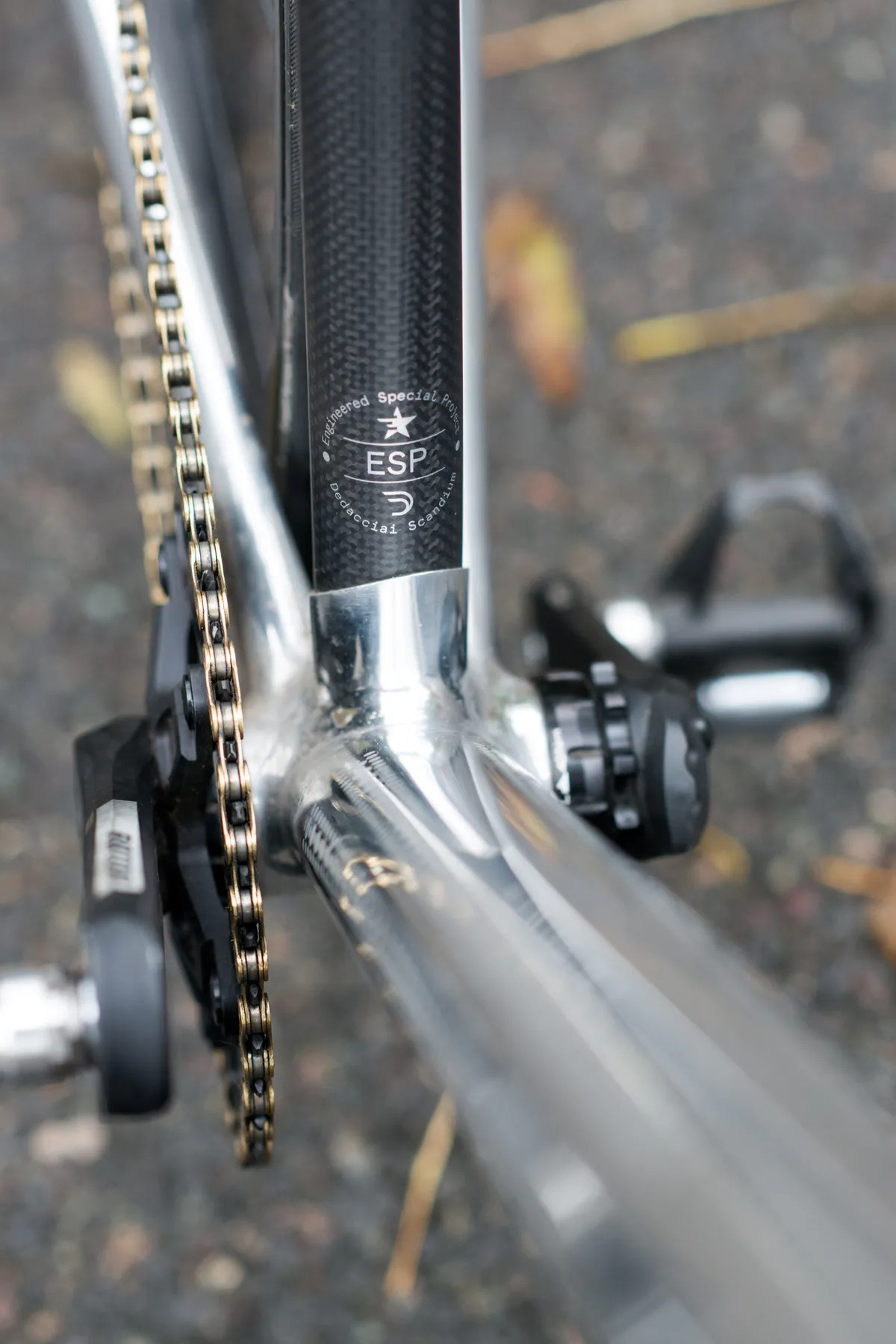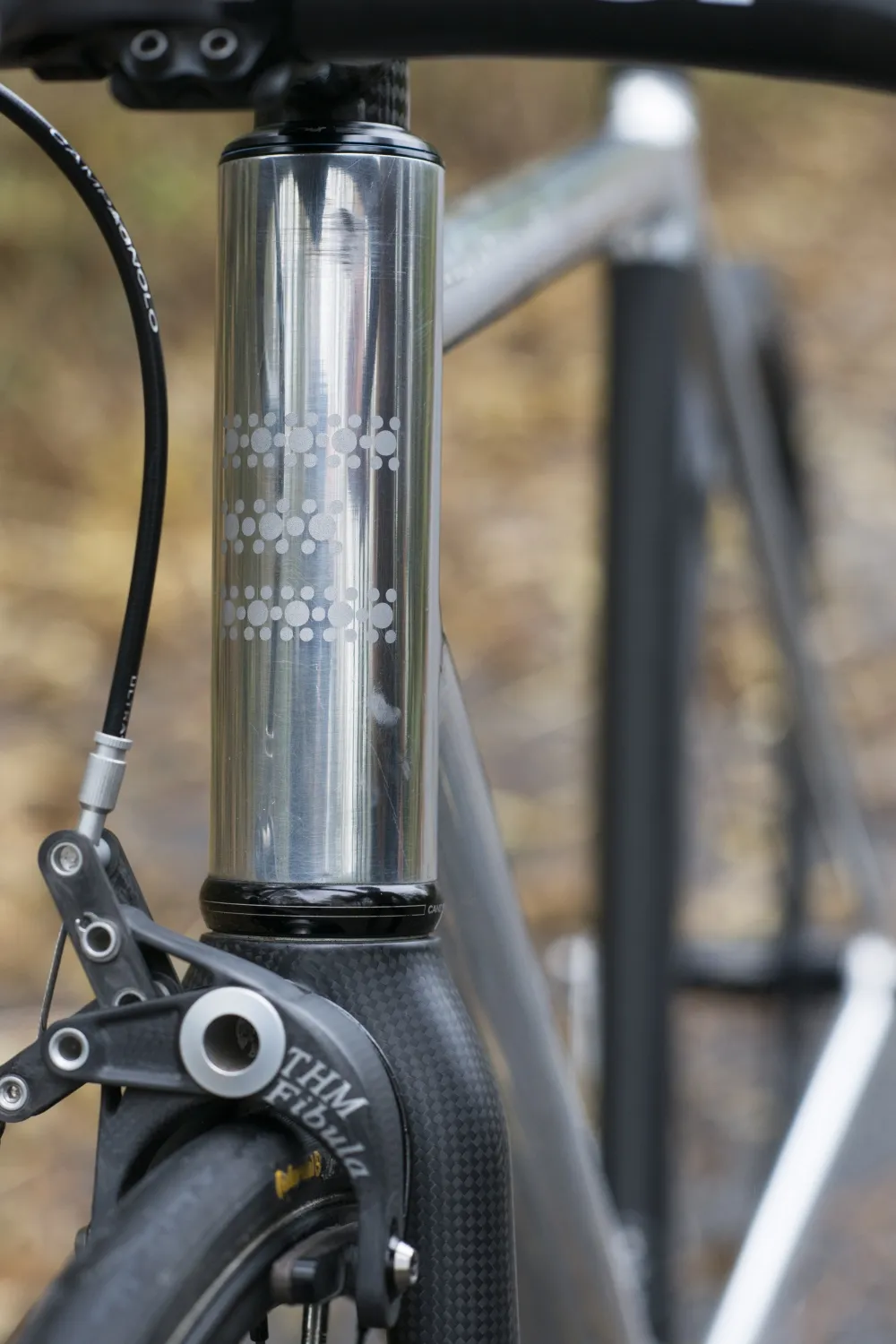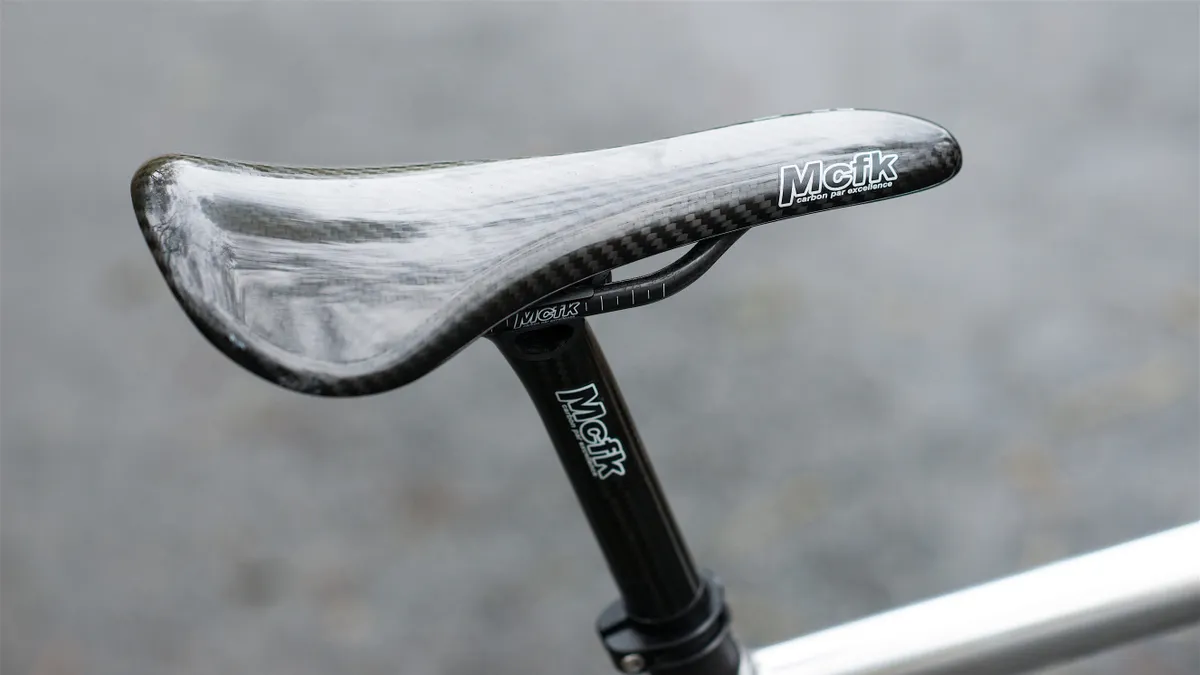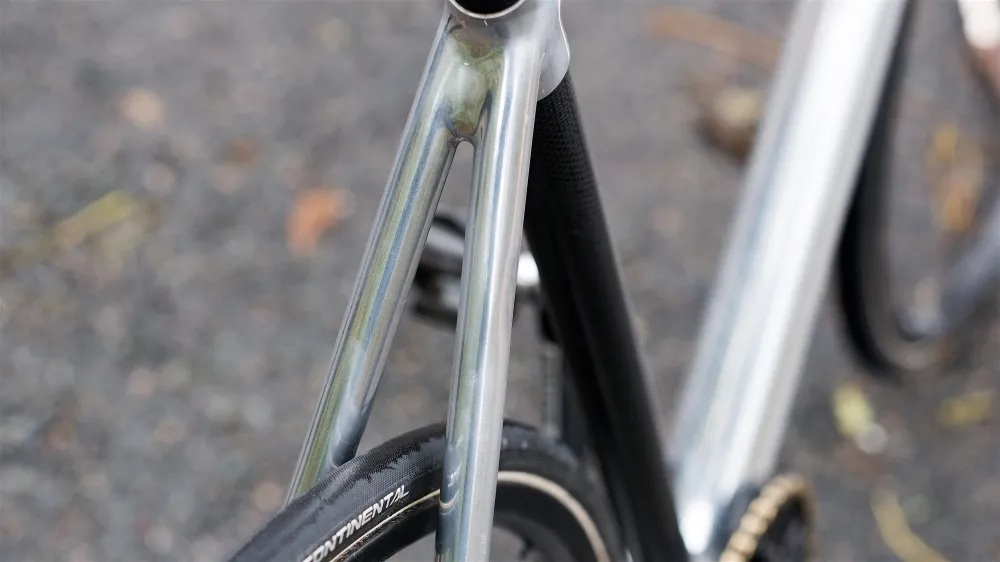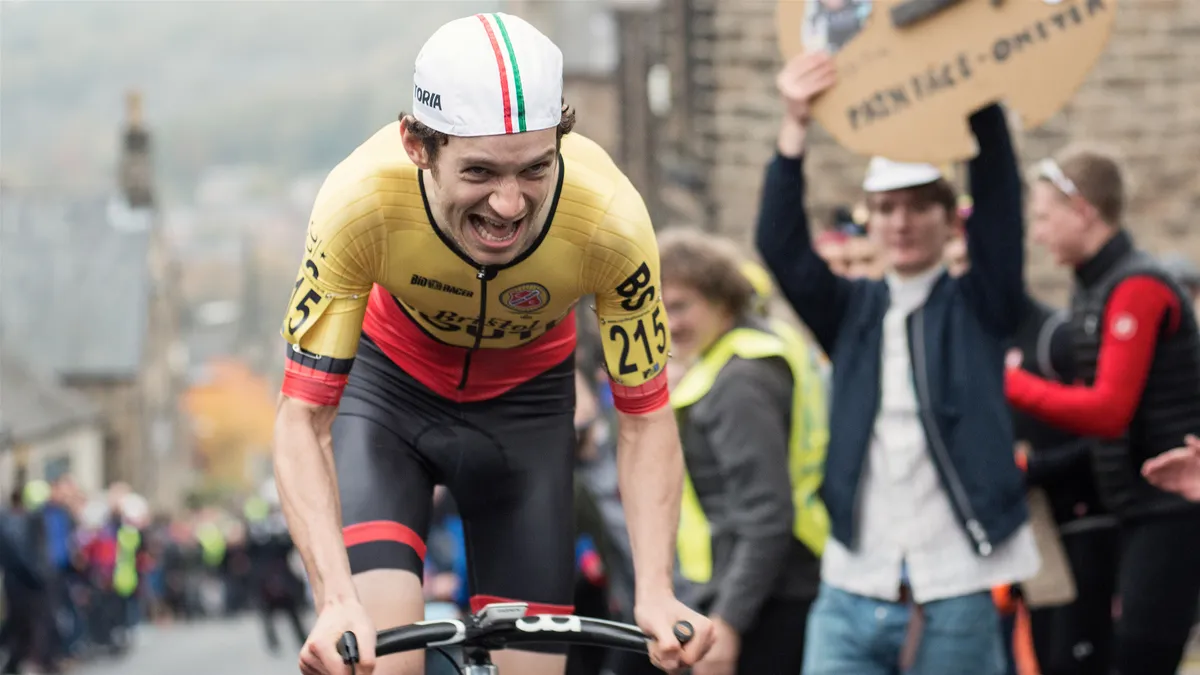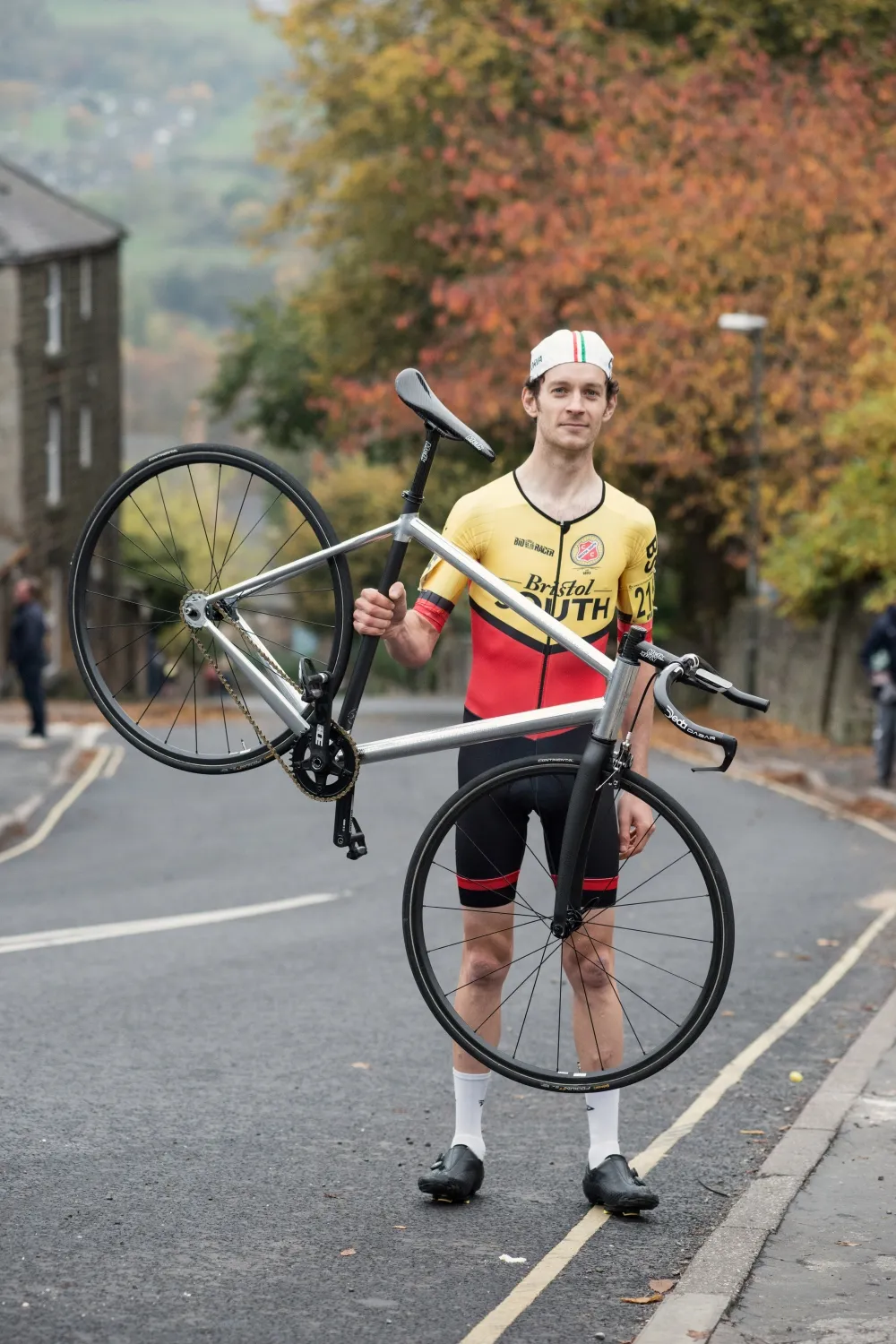If you’re unfamiliar with the British hill climb season, the format is pretty simple; find a hill and see who can ride up the fastest. Taking place on short steep climbs, riders set off at one-minute intervals and try to empty the tank in one brutal gurning effort. It sounds weird, but it’s great fun and I look forward to it every year.
During the 2015 season, I rode a standard bike with gears; it was super high-end and served me well. So for 2016 I wanted to try something different and with the 2016 Nationals looking like they could suit a fixed geared bike, I decided to source what I thought would be the perfect tool for that race. It needed to be light and singlespeed, but still stiff enough to handle the stresses and strains of hill climb racing.
- The course: The National Hill Climb Championships on Bank Road in Matlock
- The horse: Engineered Bikes E.S.P custom fixed gear
- The equipment goal: An efficient, lightweight machine, designed for one thing in mind, lactate oblivion
My Engineered frame
First port of call on my quest for anti-gravity prowess was the frame. As I wanted a fixed gear, it ideally needed to have 120mm horizontal track dropouts. There are lots of track frames that fit the bill, but they’re built purely towards stiffness and power so come up relatively heavy. I was after something more svelte, which meant going fully bespoke.
Bristol-based custom frame specialists Engineered bikes seemed like the perfect fit and they were extremely enthusiastic about the project from the start. After a few meetings with David and Adrian (founder and creative director) back in May 2016, we settled on our design: Scandium aluminium tubes, carbon seatpost, track dropouts, and no cable stops, cage or brake mounts. This would keep everything sleek, simple and obviously nice and light.
Building the perfect hill climb bike
But perhaps the most efficient mod in terms of shedding grams would be polishing instead of painting the frame. I love a fancy paint job as much as the next cycling nerd and could have had anything on my frame. But all that paint can add up to 300g, so by polishing and then sandblasting the graphics we kept the frame paint free and, vitally, the weenie in me sated.
The happy off shoot of this method was that the smooth welds and mirror finish on the frame looked totally bad-ass. There’s nothing like a product design for pure performance that still looks great and I think Engineered nailed it with my frame.

Last but not the least we used a threaded bottom bracket and regular press fit head tube. This was one part of the frame where practicality won out over shaving grams.While press fit options may have been lighter, they’re a right faff to live with. You simply can’t go wrong with the ‘older’ tried and trusted creak-free standards.
We had lots of ideas about drilling the headtube and 3D printing plastic bottom brackets and headsets, but once again these were quickly shelved in favour of real world practicality.
The finishing kit
Obviously having a super bling frame for savage hill climbs means you need an equally savage featherweight finishing kit. Stem, saddle and seat post were provided by German carbon specialists Mcfk. Its parts are elegant, rare and very light. The fork and brake were THM Carbones, another high-end German brand, and both are unreal in terms of their design and finish, so it was amazing to run THM components on my bike.

Wheels were my own and compared to the rest of the bike, relatively cheap. Low flange Mack hubs on Tubular Yishunbike rims were built with Sapim CX-Ray spokes — I think they cost around £500, which for 1,100g wheels isn’t too shabby.
The crank was Rotor’s Npower single-sided power meter model. Pacing is so important in hill climbs, so I was very keen to have power, and coming in around 546g the Npower is one of the lightest complete power meters available. Combined with a round Rotor 38T Cyclocross chainring and steel track cogs, which ranged from 15t to 20t, I had a gear for just about every occasion.
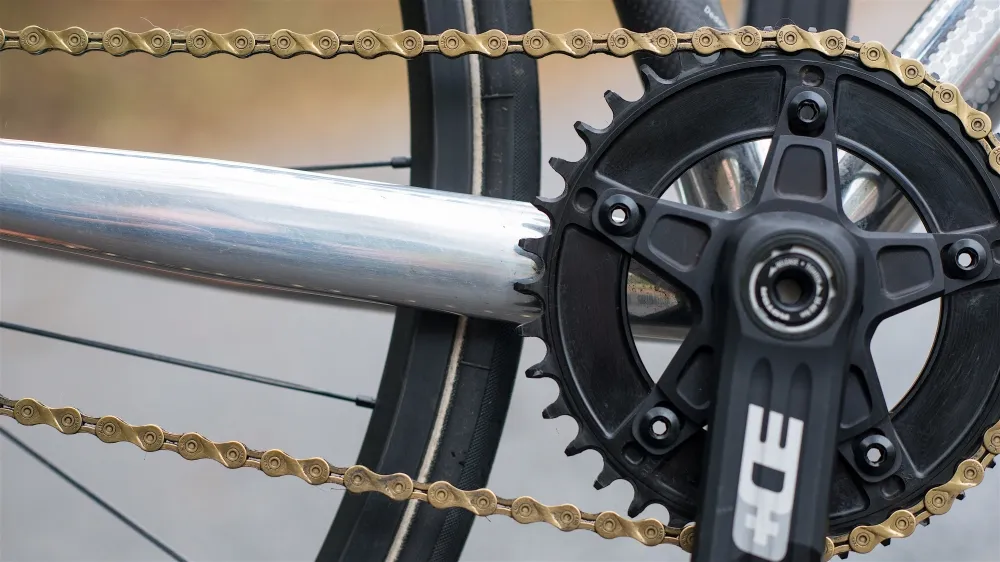
Tyres were Continental Tubular Podium TTs, not the absolute lightest, but they’re fast and relatively robust for TT tyres. The final few bits, were Shimano Dura Ace pedals, Deda Bull Horn bars, KMC 9-speed chain and a Planet X brake lever. All that added up to a complete build weight of 5.1kg with pedals. Impressive for a bike with an aluminium frame.
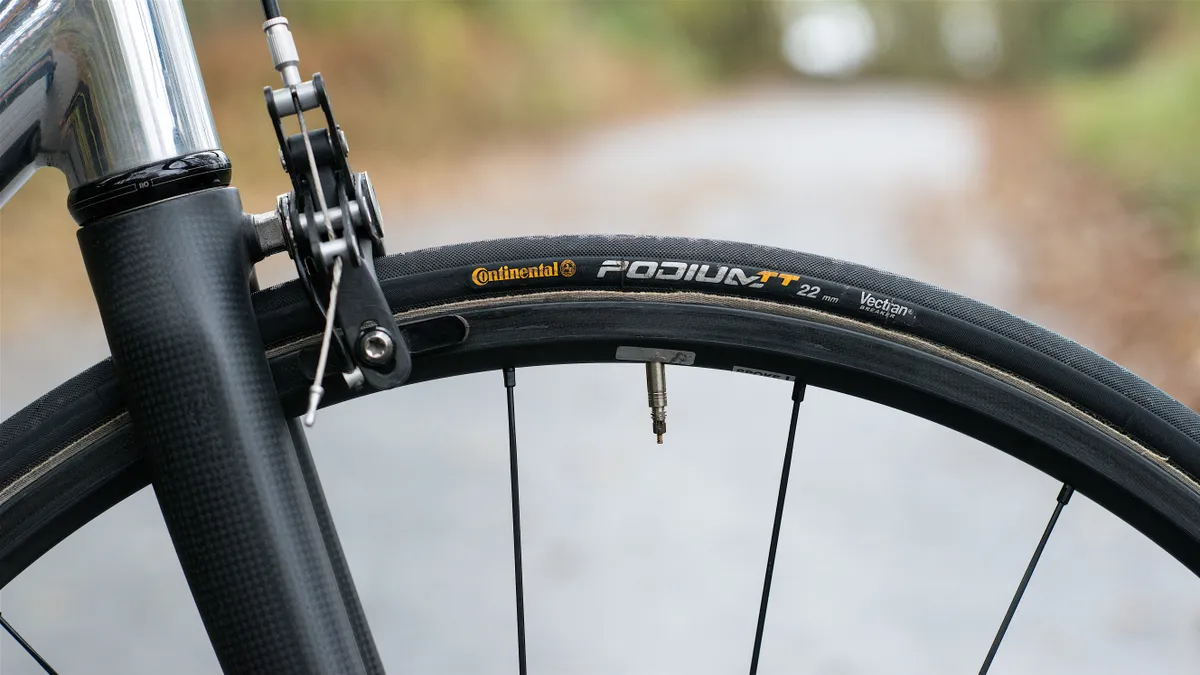
For a full spec run down with weights, check the bottom of the article.
(A quick disclaimer before we get any comments saying ‘why save all that weight when you can just have a poo before the race’. Well, I saved as much weight off my body as possible, 6ft – 62.5kg, and had a big nervous poo before the race, so all those grams off the bike really mattered) ha, ha.
So how did I get on?
Racing a 5.1kg bespoke hill climb bike
The bike was designed around one race, the 2016 Nationals on Bank Road in Matlock, and for that race it performed superbly. I finished 19th (just hitting my top 20 goal) with a time of 2.32.9, averaging 560 watts at 62.5kg. I don’t think I could have trained / raced / dieted much harder, so it was happy days all round.
Spinning out wasn’t too bad, you’d lose some time, but the pain was manageable
Bank Road is very steep, but with a fairly consistent gradient, and here the fixed gear felt amazing.
With a perfectly straight chainline, one gear and no miss shifts to worry about, I just had to concentrate on pacing and sending myself into lactate oblivion. Riding on the ragged edge through the cheering crowd during the 2016 Nationals was one of the best moments I’ve had in cycling and I’ll never forget it.
But I also used the bike for 18 other races, where my success was more mixed, especially when there were larger variations in gradient during the climb. I simply couldn’t find the right gear to deal with the changes in speed, so would have to make a choice / compromise between spinning out at 130rpm or grinding up at 40rpm.
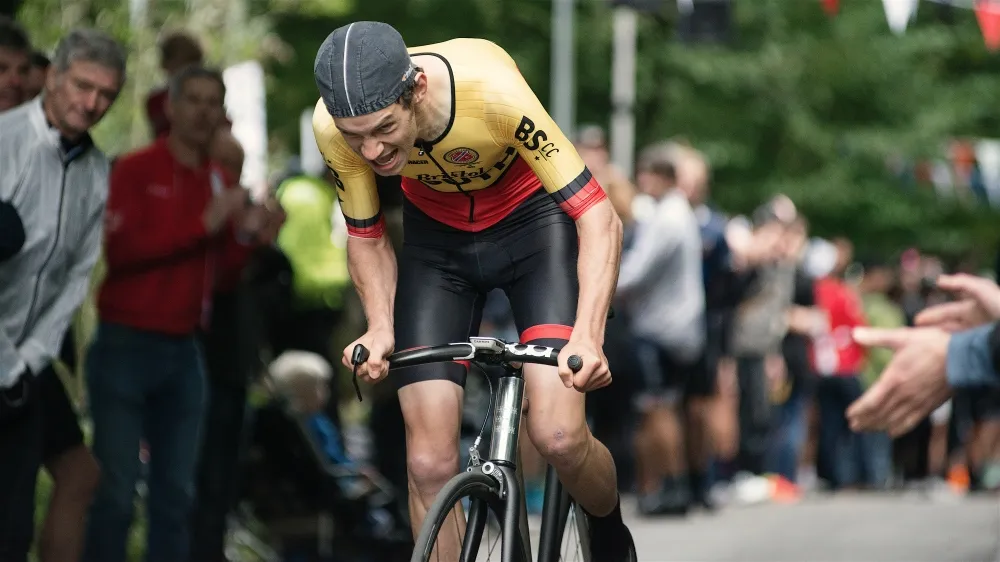
Spinning out wasn’t too bad, you’d lose some time, but the pain was manageable. Being over geared was much more unpleasant, with your knees and upper body giving out trying to keep it above 500 watts at 40rpm.
One particular climb stands out in my memory. It had a flat start, rearing up to 18 percent at the halfway point. With a 17/38 gear I had just about enough range for the 35kph fast run in, but as soon as I hit the steep section it was game over, my cadence and power dropping all the way to the line. A painful experience for me, but hopefully hilarious for the spectators.
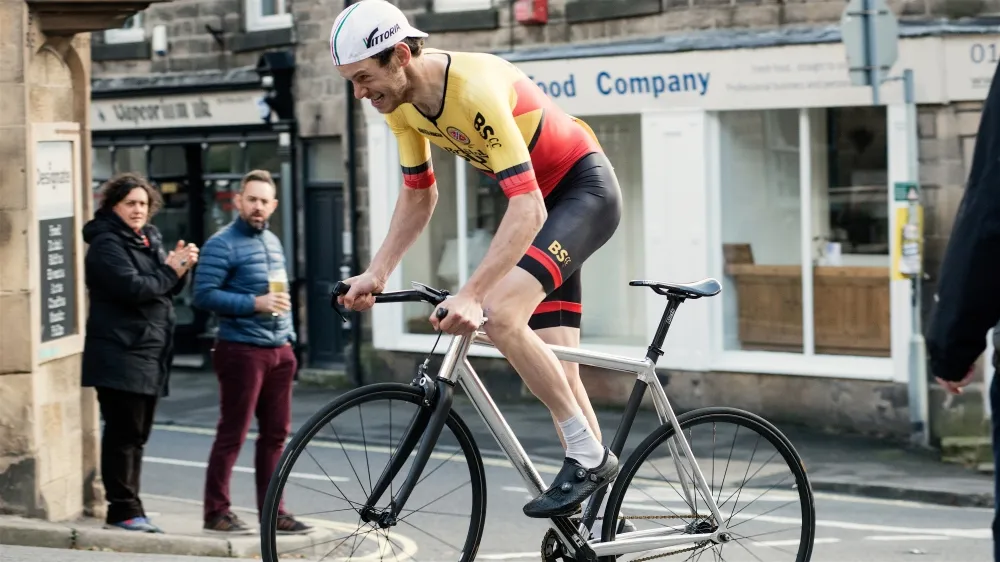
Perhaps the most surprising part about riding the fixed was its real world usability. Before we’d finished the build I envisaged riding it perhaps once or twice during the week, then at weekend races — mainly down to the perceived difficulties of commuting, training and racing on a bike that was so specific, e.g. one brake, fixed gear, carbon saddle.
But once the season had finished, I had used it exclusively (bar two rides) for two and a half months, clocking around 90 hours of riding — way more than I initially thought. For the hills around Bristol I settle on a 16/38 gear for all my training, this enabled me to get up most climbs while providing enough power for a range of interval durations. It was very ‘spinny’ on the descents, but hill climb training is all about nailing the hills and chilling everywhere else, so a 16/38 worked perfectly.
The final question
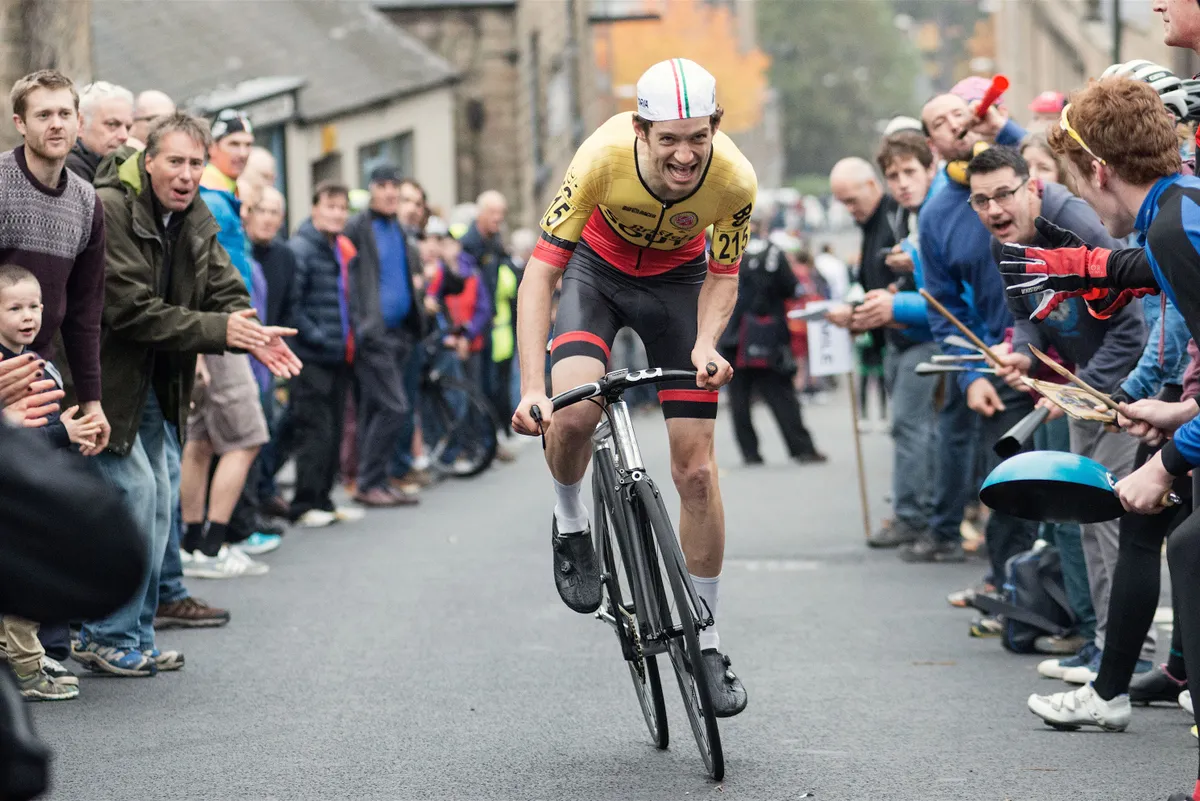
So the final question is, will I use my fixed gear for the whole 2017 hill climb season? I doubt it. There are simply too many hills where the changes in gradient make choosing the right gear difficult and eventually you come unstuck. The time differences may only be tiny between fixed and gears, but they really count in hill climbs where fractions can be the difference between 1st and being outside the top 5.
That being said, the 2016 hill climb season was by far my most enjoyable, the conversations and camaraderie with other fixed riders made each event great fun. You’d be uncertain about your gear choice, but when it all comes together, blasting a hill full gas on a fixed gear feels incredible. So for certain events where the gradient is fairly consistent and I’m feeling brave, fixed will be top of my list.
If you're interested in taking part in the hill climb series check out www.cyclingtimetrials.org.uk to find out more about the events and how to enter.
